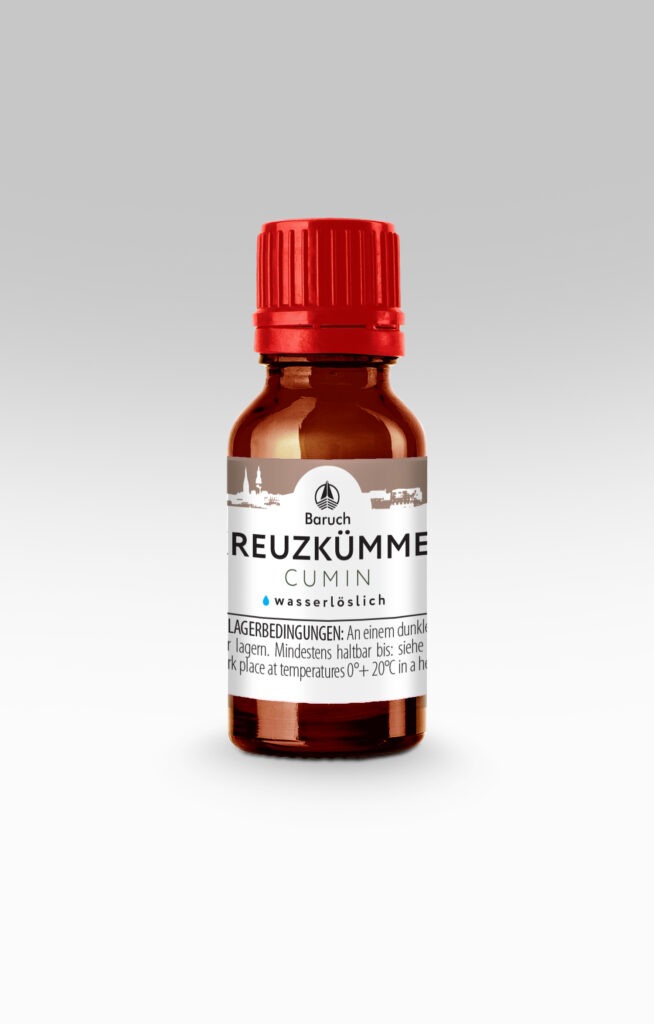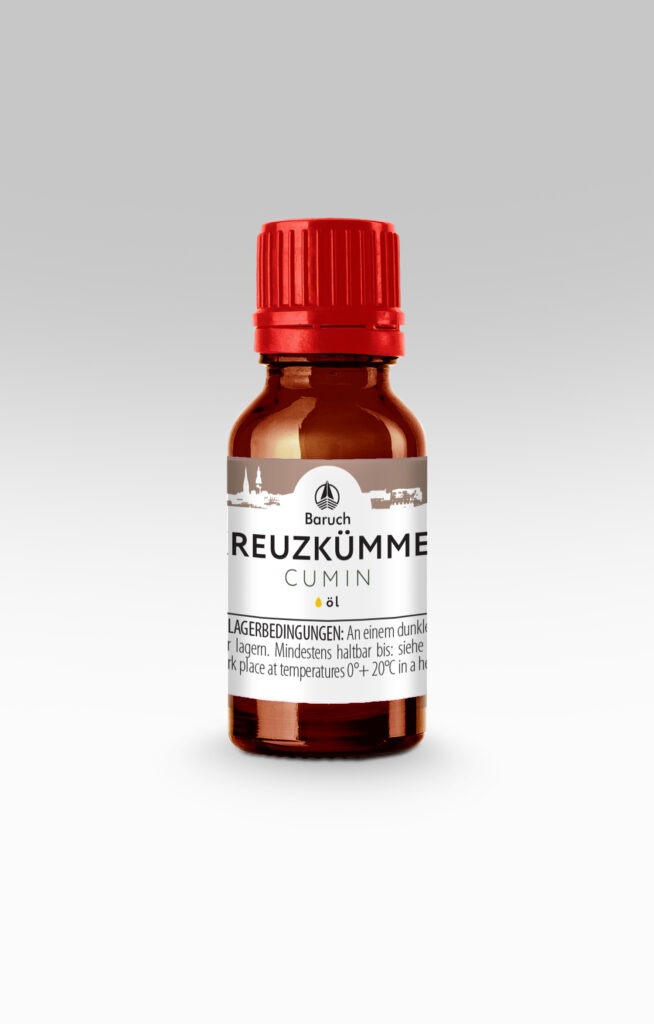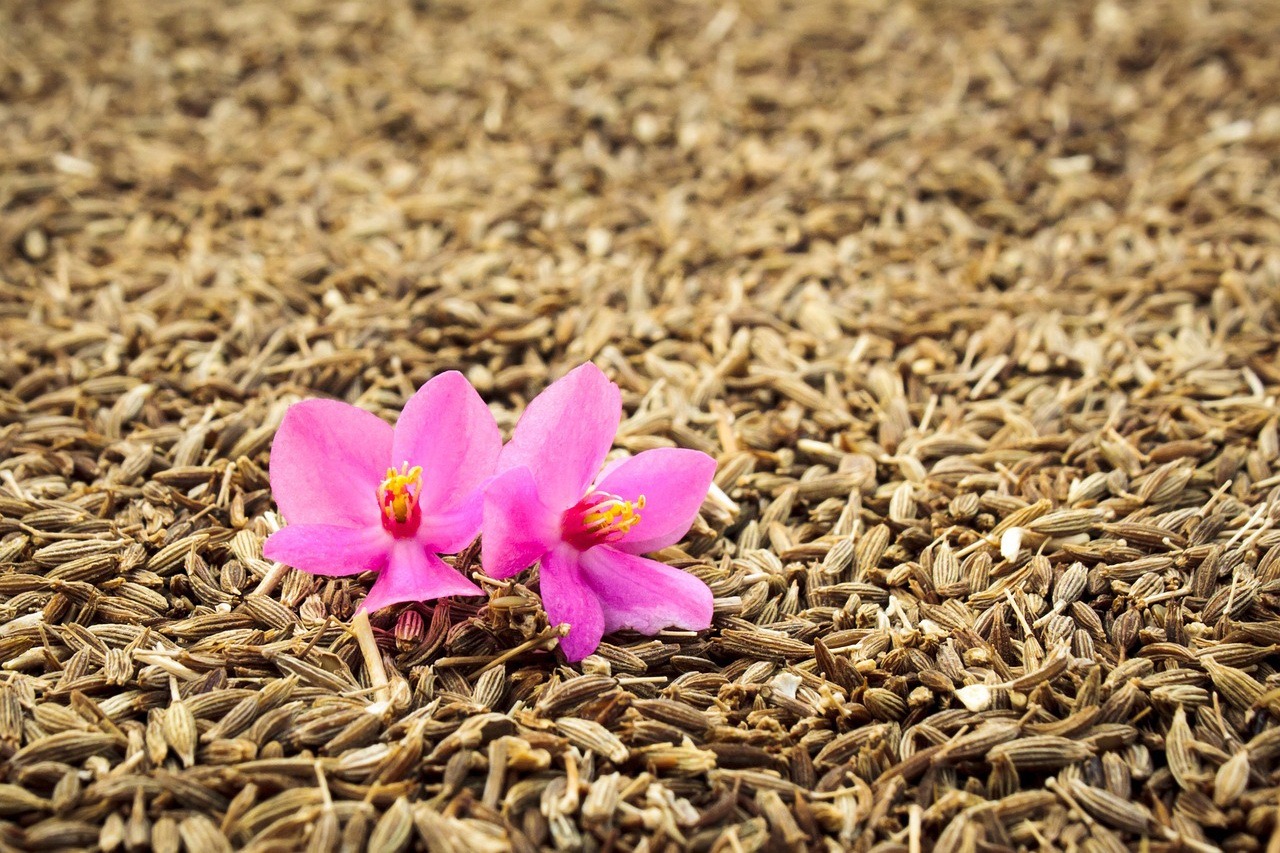It is common to distinguish between white and black cumin. Most commonly on the market, white cumin has a more delicate flavor and aroma than black cumin.
Sometimes there are publications in which black cumin oil (black seed oil) is called nigella oil (nigella sowing). This is due to the ignorance that nigella belongs to the buttercup family and cumin belongs to the umbrella family. Nigella is called “black cumin” because of the leaves, which closely resemble cumin leaves, and because of the small, black seeds. The cumin plant, on the other hand, actually looks like caraway on the outside, but in terms of taste and aroma they are completely different spices. Do not confuse oil or CO2 extract from caraway seeds with CO2 extract from cumin, this is like calling a cow a rabbit, only because of the information that both the cow and the rabbit eat grass. Ignorance of botany can lead to unpredictable consequences and mislead consumers. If during cooking, due to such confusion, some dishes simply spoil, then problems may arise when trying to use the medicinal properties of these completely different plants.
Cumin oil has been used in folk medicine since ancient times. Therefore, CO2 extract from cumin can be used with the same if not better effect. It has a tonic effect, improves appetite, normalizes digestion, promotes the accelerated removal of toxins and excess fluid, promotes the resorption of neoplasms (not all), has an antiseptic effect, gently relieves pain and blocks the inflammatory process, affects the intestines as a mild laxative and increases the body’s immune system. It is used to treat bronchitis and to increase the elasticity of blood vessels. With cumin you can successfully treat obesity. In addition, CO2 extract has an antifungal and antimicrobial effect and has an antispasmodic and calming effect.
Cumin is most commonly used as a spice in European countries, the Caucasus, and Central Asia. Cumin has a delicate nutty aroma and a bitter-sour, spicy taste. Cumin is used as a spice in recipes for pilaf, cold appetizers, marinades for canning and pickling vegetables. Commonly used in recipes for various tomato and spice sauces, cumin is an essential part of Indian national spice mixes – garam masala and curry. It is also used to flavor fermented milk products, salads, drinks and pastries. It should be noted that cumin goes well with almost all other spices.
Cumin CO2 extract is a yellowish to greenish-brown oily liquid with a very strong aroma and a pungent, sour taste. When diluted, the aroma becomes weaker and very pleasant.


Chart 1. Main components of cumin CO2 extract
| NAME | CONTENT IN% OF THE AMOUNT OF VOLATILE COMPONENTS | EFFECT |
|---|---|---|
| Cuminaldehyd | 20 | It is used in perfumery to shape the aroma of lily of the valley and hyacinth |
| Alpha- and Beta-Pinene | 9 | Antiseptic, local irritant, diuretic, expectorant. |
| Timoquinone | 5 | Improves breathing. |
| Vitafterin | 3 | Anticancer, antifungal, bactericidal. |
| Ditepts | 2 | Antiseptic |
| Gerniarin | 1,2 | Fungistatic, antispasmodic. |
| Linalool | 0,9 | Anticonvulsant, antispasmodic. |
| Oleic acid | 3,5 | Belongs to the group of unsaturated omega-9 fatty acids. Reduces the risk of heart disease. Blocks the absorption of cholesterol. Improves blood vessel walls. Removes inflammation. Promotes the repair and regeneration of nerve cells. |
| Linoleic acid | 1,1 | It belongs to the group of omega-6 fatty acids. Reduces the risk of developing hypertension and also helps fight obesity. |
| Gamma Linolenic Acid | 0,4 | It is an essential omega-6 fatty acid. Helps lower blood cholesterol levels. Supports skin health and helps fight obesity. |
| Alpha Linolenic Acid | 0,3 | It belongs to the group of omega-3 fatty acids. Reduces the risk of cardiac arrhythmia, thrombosis and high blood pressure. Combats the appearance of scaly inflammation of the skin. Pathologies of the retina. |
In cosmetics, the CO2 extract of cumin, like the classic ethereal caraway, is difficult to use due to its very strong aroma. However, the essential oil and thus the CO2 extract is used in the manufacture of pharmacy cosmetics. This will prepare:
- Means for cleansing the skin;
- creams to fight inflammation and skin rashes;
- anti-cellulite creams and oils;
- face and body skin tonic;
- lightening creams to remove freckles and age spots;
- used as part of conditioners and hair masks to fight dandruff and strengthen hair;
- deodorants;
